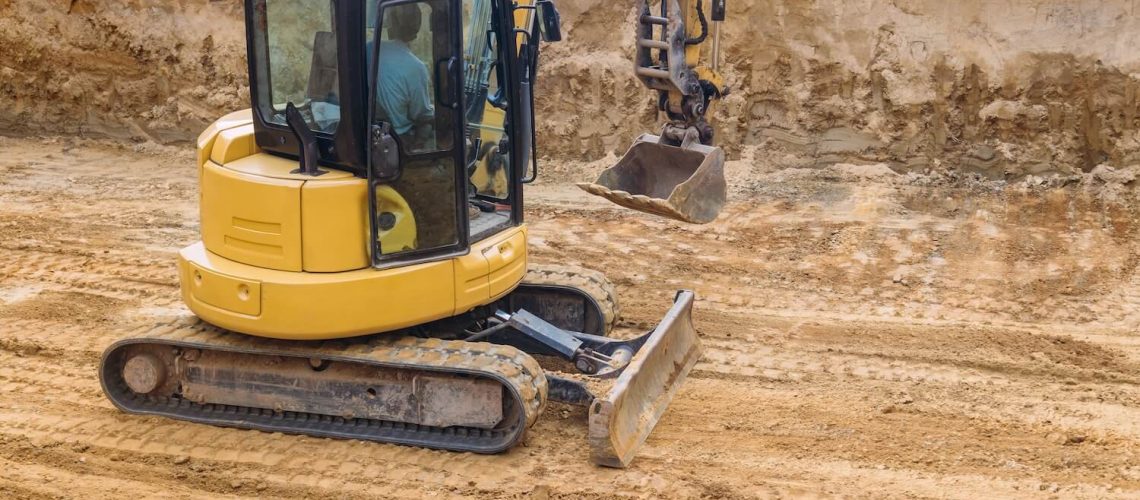In the world of construction, site work often serves as the foundation upon which successful projects are built. It encompasses a range of activities necessary to prepare a site for construction, including excavation, grading, utility installation, and landscaping. While it may seem like an added expense or a step that can be expedited, cutting corners during site work can have significant repercussions, both in terms of financial costs and project outcomes.
This article delves into the importance of site work in construction and explores the detrimental effects of attempting to bypass or skimp on these critical processes.
Understanding Site Work
Site work is the preliminary phase of construction that sets the stage for the entire project. It involves preparing the land to accommodate the proposed development, ensuring it is level, stable, and equipped with necessary utilities. This phase typically begins with clearing the site of any vegetation, debris, or structures that may impede construction. Excavation follows, wherein earth is removed or added to achieve the desired topography and elevation. Grading then establishes the slope and contour of the land, facilitating proper drainage and minimizing erosion. Additionally, site work includes installing utilities such as water, sewer, electricity, and telecommunications to support the future building’s needs. Finally, landscaping and site amenities are added to enhance the aesthetics and functionality of the property.
The Importance of Proper Site Work
Structural Integrity
Proper site work lays the groundwork for a structurally sound building. Adequate excavation and grading ensure a stable foundation by addressing issues such as soil compaction, settlement, and drainage. Without proper preparation, buildings may be susceptible to foundation failure, uneven settling, and structural damage over time. These issues not only compromise the safety and integrity of the structure but also result in costly repairs and liabilities.
Regulatory Compliance
Site work is subject to numerous regulations and codes established by local authorities and governing bodies. Compliance with these regulations is essential to obtain permits and approvals for construction projects. Cutting corners during site work can lead to violations, delays, fines, and even project shutdowns, jeopardizing timelines and budgets. Adhering to regulatory requirements ensures that the project meets safety, environmental, and accessibility standards, safeguarding the interests of stakeholders and the community.
Environmental Impact
Site work can have a significant impact on the environment if not executed responsibly. Improper grading and drainage can lead to erosion, sedimentation, and contamination of water bodies, harming ecosystems and wildlife habitats. Clearing vegetation without proper mitigation measures can disrupt local biodiversity and contribute to soil erosion and loss of habitat. Additionally, inadequate management of construction waste and pollutants can degrade air and water quality, posing health risks to communities. By prioritizing sustainable site practices and environmental stewardship, construction projects can minimize their ecological footprint and contribute to a healthier planet.
Cost Efficiency
While site work incurs upfront costs, it ultimately contributes to long-term cost efficiency and project success. Proper grading and drainage prevent water infiltration, reducing the risk of moisture-related problems such as mold, mildew, and rot. Well-planned utility installations minimize the need for future repairs and maintenance, optimizing operational efficiency and reducing lifecycle costs. Moreover, investing in quality site work enhances the marketability and value of the property, attracting tenants, buyers, and investors. In contrast, cutting corners during site work may lead to costly remediation efforts, delays, and legal disputes, far outweighing any initial savings.
Long-Term Maintenance Costs
Skimping on site work may seem like a cost-saving measure initially, but it can result in higher long-term maintenance expenses. Inadequate grading and drainage can lead to water pooling, soil erosion, and pavement deterioration, necessitating frequent repairs and upkeep. Faulty utility installations may require ongoing maintenance to address leaks, malfunctions, and service disruptions. Neglecting to address these issues promptly can exacerbate damage, increase repair costs, and disrupt business operations. By investing in proper site work upfront, construction projects can minimize maintenance expenses and prolong the lifespan of infrastructure, reducing the total cost of ownership over time.
Impact on Surrounding Community
Site work doesn’t just affect the construction site; it also impacts the surrounding community and environment. Noise, dust, and traffic disruptions associated with construction activities can inconvenience residents, businesses, and commuters. Poorly managed site work can lead to pollution, runoff, and habitat destruction, affecting local ecosystems and natural resources. Additionally, inadequate safety measures may endanger pedestrians, cyclists, and motorists passing near the construction site. By prioritizing community engagement, communication, and mitigation efforts, construction projects can minimize their negative impact on the surrounding area and foster positive relationships with stakeholders.
The Cost of Cutting Corners Clearing
Rework and Delays
Rushing through site work or compromising on quality often results in rework and delays during subsequent construction phases. Inadequate excavation may necessitate additional digging or soil stabilization measures to address foundation issues. Poor grading can lead to improper drainage, flooding, and erosion, requiring corrective action to mitigate water damage. Subpar utility installations may result in service disruptions, leaks, and code violations, necessitating repairs and inspections. Each instance of rework prolongs the construction timeline, increases labor and material costs, and undermines project efficiency.
Safety Hazards
Cutting corners during site work compromises safety standards and puts workers and occupants at risk. Inadequate excavation practices increase the likelihood of cave-ins, trench collapses, and other excavation-related accidents. Improperly graded sites pose slip, trip, and fall hazards, especially during inclement weather. Faulty utility installations can lead to electrical shocks, gas leaks, and other life-threatening emergencies. Neglecting safety protocols not only endangers human lives but also exposes contractors to legal liabilities, lawsuits, and reputational damage. Prioritizing safety in site work is not only a moral imperative but also a legal requirement to protect workers and uphold industry standards.
Litigation and Liability
Cutting corners during site work can have legal ramifications that extend far beyond the construction phase. If deficiencies in site preparation result in property damage, personal injury, or environmental harm, stakeholders may pursue litigation to seek compensation for their losses. Contractors may be held liable for construction defects, negligence, breach of contract, or violation of regulatory requirements. Legal disputes can escalate into costly court battles, settlements, and damage awards, tarnishing the reputation and financial viability of construction firms. By adhering to industry best practices and quality standards, contractors can mitigate the risk of litigation and uphold their professional integrity.
Reputation Damage
In an industry built on trust and reputation, cutting corners during site work can have far-reaching consequences for contractors and developers. Word of mouth travels fast, and negative experiences or outcomes can tarnish a company’s reputation and deter potential clients and partners. Social media and online review platforms amplify the impact of dissatisfied customers, making it essential for construction firms to prioritize quality, integrity, and customer satisfaction. By delivering exceptional results and adhering to ethical business practices, contractors can build a positive reputation that attracts repeat business and referrals.
Hiring A Professional Land Clearing Company
When it comes to site work, hiring a professional land clearing company is essential to ensure the success of your construction project.
Here are some important steps to consider when hiring a land clearing company:
- Research and Identify Potential Companies: Start by researching land clearing companies in your area. You can search online, ask for recommendations from colleagues or industry contacts, or consult local business directories. Look for companies with a proven track record of experience, expertise, and reliability in land clearing and site preparation.
- Check Credentials and Qualifications: Once you’ve identified potential companies, verify their credentials and qualifications. Ensure that the company is licensed, bonded, and insured to operate in your area. Check for any certifications or accreditations that demonstrate their expertise in land clearing techniques, safety standards, and environmental regulations.
- Review Past Projects and Client Feedback: Request references or case studies from the land clearing company to review their past projects and client feedback. Look for projects similar in scope and scale to yours to assess their capabilities and performance. Reach out to past clients to inquire about their experience working with the company, including their professionalism, reliability, and satisfaction with the results.
- Evaluate Equipment and Resources: Land clearing requires specialized equipment and resources to efficiently and safely clear vegetation, trees, and debris from the site. Evaluate the company’s equipment inventory, ensuring they have the necessary machinery, tools, and manpower to handle your project requirements. Modern and well-maintained equipment not only improves efficiency but also reduces the risk of delays and accidents.
- Discuss Project Details and Expectations: Schedule a consultation with the land clearing company to discuss your project details, timeline, and expectations. Provide them with information about the site location, size, terrain, vegetation, and any specific challenges or constraints they may encounter. Clearly communicate your goals, budget, and desired outcomes for the project to ensure alignment and understanding.
- Obtain Multiple Quotes and Proposals: Obtain quotes and proposals from multiple land clearing companies to compare pricing, services, and terms. Avoid automatically choosing the lowest bidder, as quality and reliability should be prioritized over cost savings. Review each proposal carefully, paying attention to the scope of work, materials, timelines, and any exclusions or additional fees.
- Sign a Detailed Contract: Once you’ve selected a land clearing company, ensure that all project details, terms, and expectations are documented in a detailed contract. The contract should outline the scope of work, project timeline, payment schedule, warranties, and any other relevant terms and conditions. Review the contract with legal counsel if necessary to ensure clarity and protection of your interests.
- Monitor Progress and Communication: Throughout the land clearing process, maintain open communication with the company to monitor progress, address any issues or concerns, and make necessary adjustments. Regular site visits and progress meetings can help ensure that the project stays on track and meets your expectations. Address any deviations from the agreed-upon scope or schedule promptly to avoid delays or misunderstandings.
- Prioritize Safety and Environmental Compliance: Safety and environmental compliance should be paramount during land clearing operations. Ensure that the company adheres to industry best practices, safety protocols, and environmental regulations to protect workers, the community, and natural resources. Verify that proper permits and approvals are obtained before commencing work and that site cleanup and restoration are included in the project scope.
- Evaluate Results and Provide Feedback: Once the land clearing project is complete, evaluate the results based on your original goals and expectations. Provide feedback to the company on their performance, highlighting areas of strength and opportunities for improvement. A reputable land clearing company will value your input and use it to enhance their services and customer satisfaction.
By following these steps and hiring a professional land clearing company, you can ensure that your site work is conducted efficiently, safely, and in compliance with regulatory requirements. Investing in quality land clearing sets the stage for a successful construction project and contributes to long-term sustainability and community impact.
Conclusion
Site work is the cornerstone of successful construction projects, laying the foundation for safety, quality, and efficiency. Cutting corners during site preparation may seem like a shortcut to savings, but it often leads to costly repercussions, including rework, delays, safety hazards, litigation, and reputational damage. By prioritizing proper site work, construction firms can mitigate risks, enhance project outcomes, and uphold industry standards. Investing in quality site preparation is not only a sound business decision but also a commitment to safety, sustainability, and professionalism in the construction industry.

